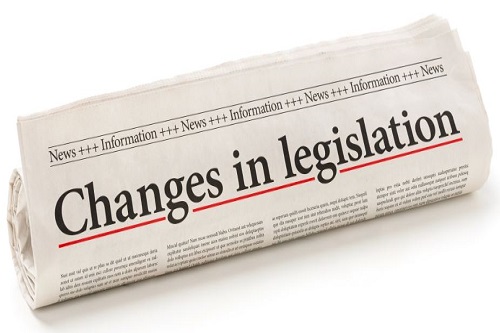Health and Safety (Amendment) (EU Exit) Regulations 2018
Ionising Radiation (Basic Safety Standards) (Miscellaneous Provisions) (Amendment) (EU Exit) Regulations 2018
17 January, 2020 – Directive 2017/2398 on the protection of workers from exposure to carcinogens or mutagens
Health and Safety (Amendment) (EU Exit) Regulations 2018
These regulations (effective on EU Exit date) aim to ensure that, following the withdrawal of the UK from the EU, legislation related to a range of health and safety issues continues to operate effectively.
The legislation includes:
- Offshore Installations (Prevention of Fire and Explosion, and Emergency Response) Regulations 1995
- Health and Safety (Safety Signs and Signals) Regulations 1996
- Control of Substances Hazardous to Health Regulations 2002
- Control of Artificial Optical Radiation at Work Regulations 2010
- Genetically Modified Organisms (Contained Use) Regulations 2014
- Offshore Installations (Offshore Safety Directive) (Safety Case, etc) Regulations 2015
- Control of Major Accident Hazards (COMAH) Regulations 2015
- Ionising Radiations Regulations 2017.
The date given for entry into force is “exit day” which is currently scheduled for October 2019. Click here for even more info!
Ionising Radiation (Basic Safety Standards) (Miscellaneous Provisions) (Amendment) (EU Exit) Regulations 2018
These regulations aim to ensure that, following the withdrawal of the UK from the EU, the Ionising Radiation (Basic Safety Standards) (Miscellaneous Provisions) Regulations 2018 (SI 2018 No. 482) continue to operate effectively.
Again, the date given for entry into force is “exit day” which is currently scheduled for October 2019. Click here for even more info!
17 January, 2020 – Directive 2017/2398 on the protection of workers from exposure to carcinogens or mutagens
This directive amends Directive 2004/37/EC on the protection of workers from the risks related to exposure to carcinogens or mutagens at work.
Maximum levels for the exposure of workers to some carcinogens or mutagens are established by values which, pursuant to Directive 2004/37/EC, must not be exceeded. Some of those limit values are revised by this amending legislation and limit values set for additional carcinogens and mutagens.
Due to the lack of consistent data on substance exposure, it is necessary to protect exposed workers or workers who are at risk of exposure by enforcing relevant health surveillance. It should therefore be possible, the new directive argues, for appropriate health surveillance of workers, for whom the results of the assessment referred to Directive 2004/37/EC reveal a risk to health or safety, to continue after the end of exposure following an indication by the doctor or authority responsible for the health surveillance.
Such surveillance should be carried out in accordance with the national law or practice of the Member States.
Among the limit values changed by this new directive are those for vinyl chloride monomer, certain chromium (VI) compounds, respirable crystalline silica dust and hardwood dusts. Member States must adopt national legislation to comply with Directive 2017/2398 by 17 January 2020. Click here for even more info!











